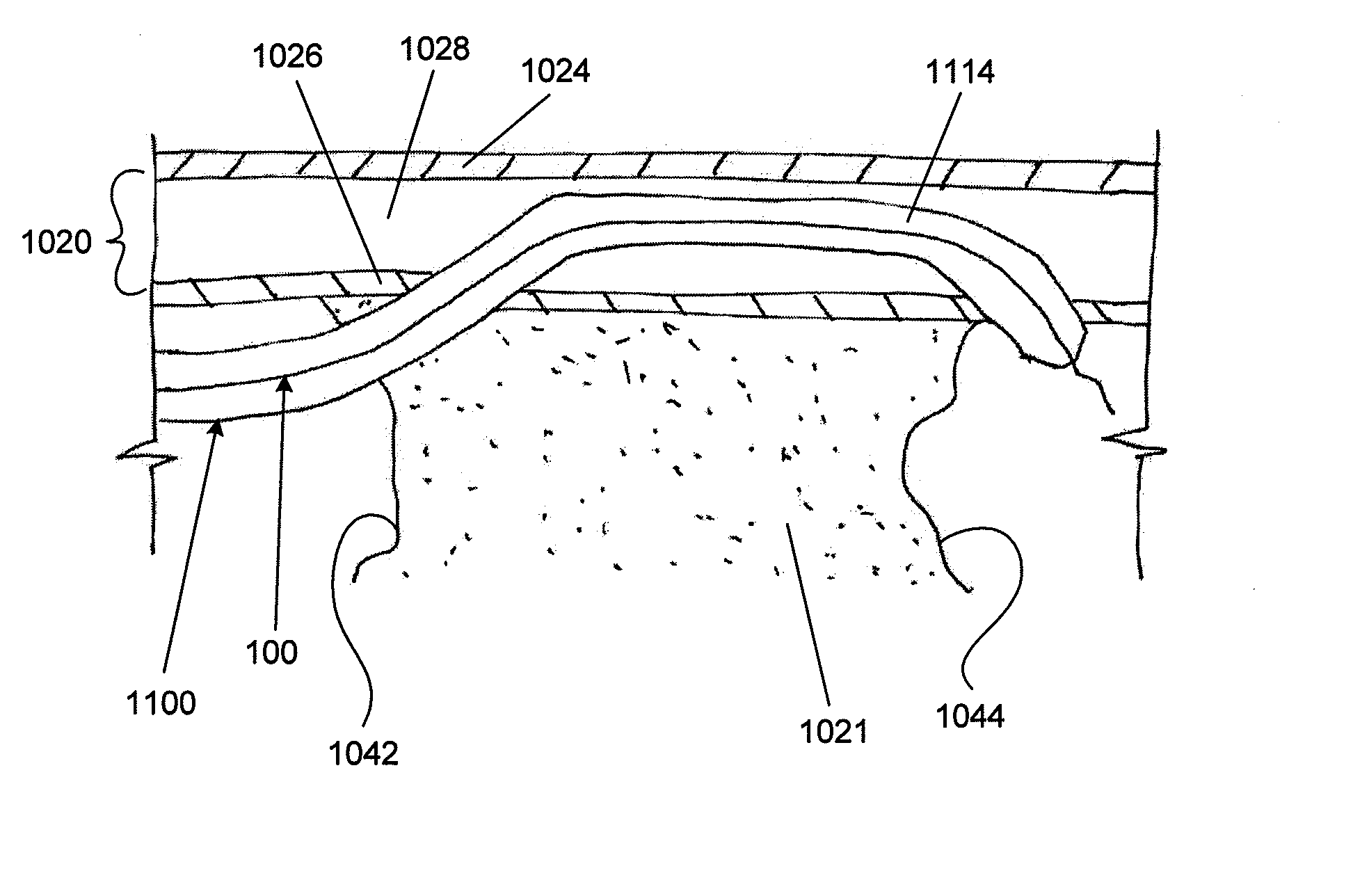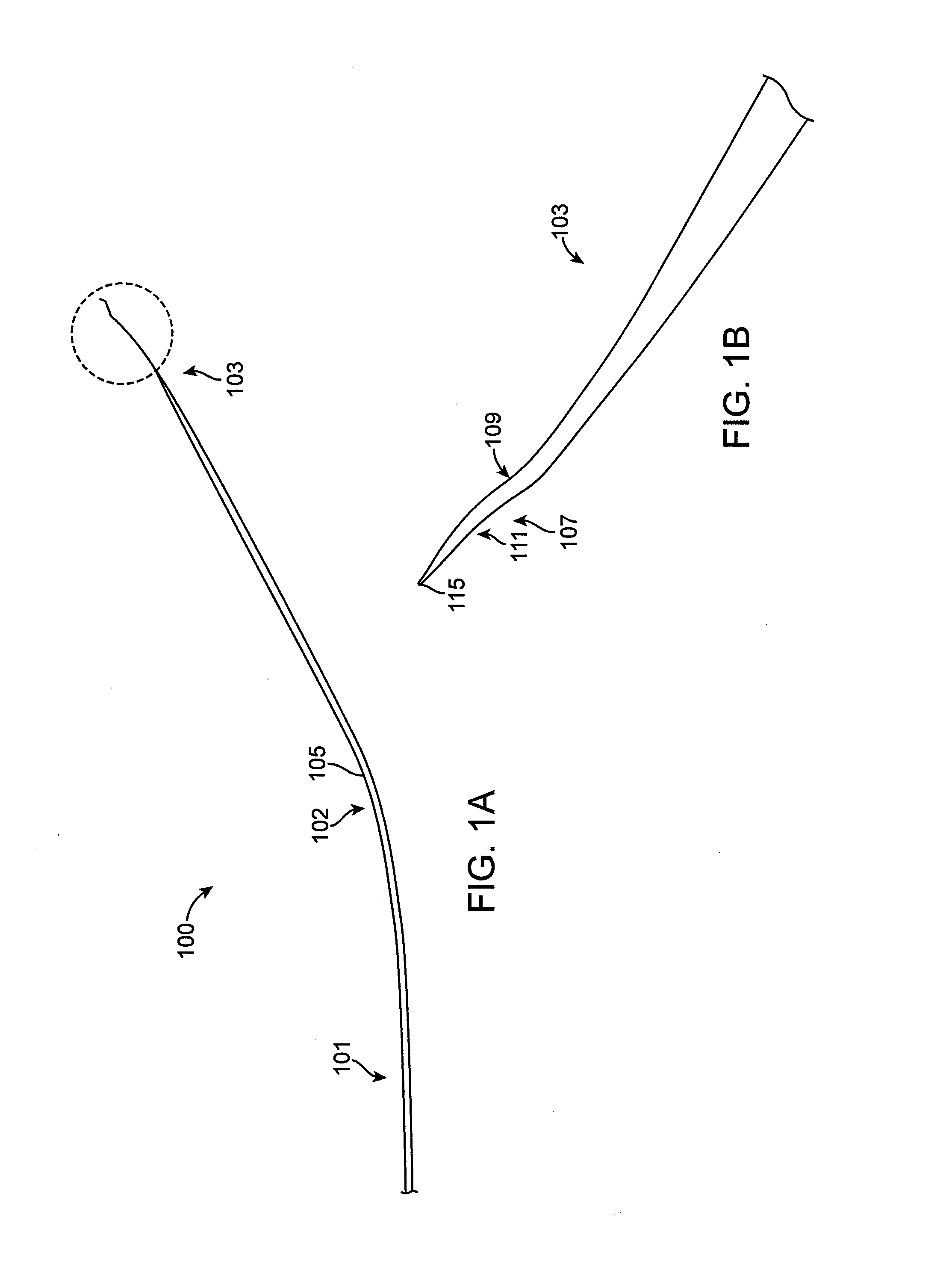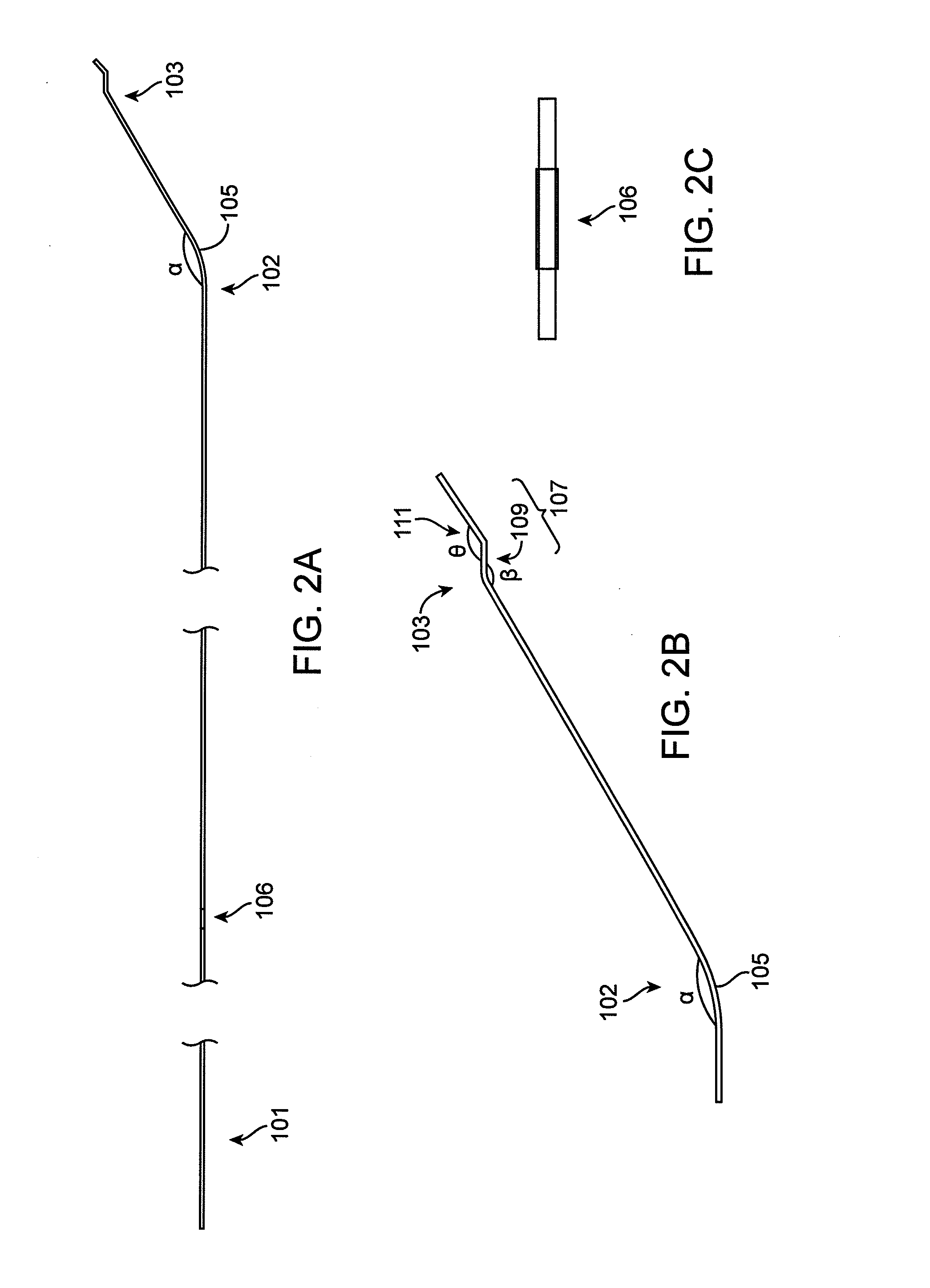Re-entry stylet for catheter
a catheter and stylet technology, applied in the field of catheter re-entry stylets, can solve the problems of legs, stomach and kidneys and achieve the effects of reducing brain and heart, affecting the blood circulation of the arms, and affecting the function of the catheter
- Summary
- Abstract
- Description
- Claims
- Application Information
AI Technical Summary
Benefits of technology
Problems solved by technology
Method used
Image
Examples
Embodiment Construction
[0038]Referring to FIG. 11A, an occluded vessel 1000 includes a lumen 1022 (or “true lumen”) with an occlusion 1021 and an arterial wall 1020. The arterial wall 1020 can include an innermost intimal layer 1026, which can include the endothelium, the subendothelial layer, and the internal elastic lamina. A relatively soft medial layer 1028 (also called the “subintimal space”) surrounds the intimal layer 1026, which is then surrounded by an advential layer 1024. The proximal and distal caps 1042, 1044 of the occlusion are generally very hard relative to the rest of the occlusion. As a result, when a guidewire or occlusion-crossing device hits one of the caps 1042, 1044, it can often end up deflecting off of the cap 1042, 1044 and extending through the intimal layer 1026 and into the relatively soft medial layer 1028. For example, referring to FIG. 11B, an occlusion-crossing device 1100 has extended into the subintimal space within the medial layer 1028, which can define a “false lumen...
PUM
 Login to View More
Login to View More Abstract
Description
Claims
Application Information
 Login to View More
Login to View More - R&D
- Intellectual Property
- Life Sciences
- Materials
- Tech Scout
- Unparalleled Data Quality
- Higher Quality Content
- 60% Fewer Hallucinations
Browse by: Latest US Patents, China's latest patents, Technical Efficacy Thesaurus, Application Domain, Technology Topic, Popular Technical Reports.
© 2025 PatSnap. All rights reserved.Legal|Privacy policy|Modern Slavery Act Transparency Statement|Sitemap|About US| Contact US: help@patsnap.com



